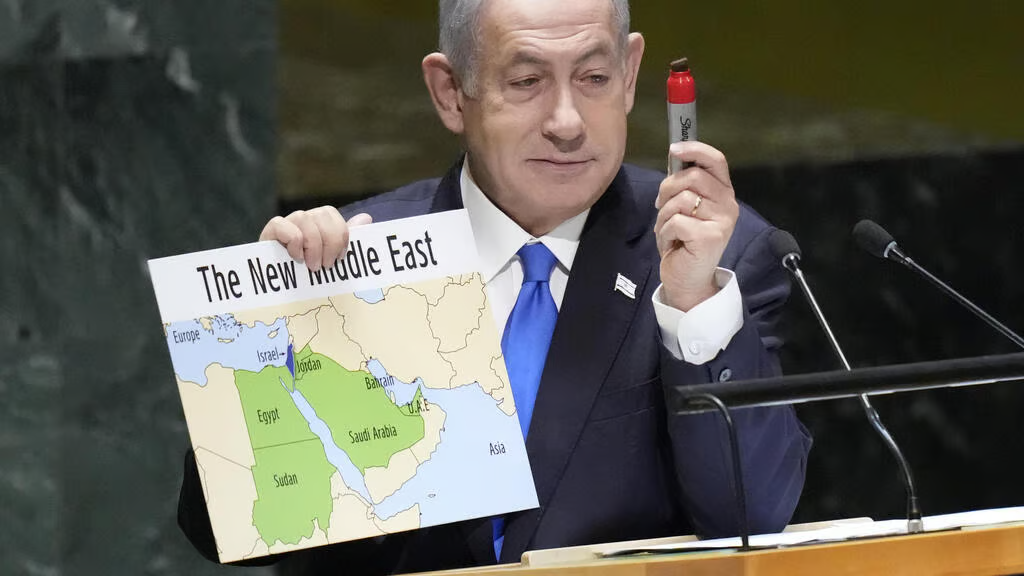
Contrary to Israel’s carefully constructed façade, the record shows that Tel Aviv has long supported Hamas for purposes of destabilization and peace-wrecking, only one of the many strategic expedients deployed by Israel to achieve a long-term goal: denying Palestinian statehood and expanding its own borders.
It has been now more than a year since “Hamas’s October 7 attack,” the all-powerful event that legacy media have hammered out to exhaustion to indict as the ultimate cause of not only the ongoing Israeli-Palestinian conflict, but of much of the instability currently ravaging the Middle East.
In the brutal “reaction” campaign unleashed on the Gaza Strip, Israel has pursued a course of action that the International Court of Justice, in a first interim ruling, associated with the risk of genocide, while a growing body of research, including investigative reports from highly respected human rights and legal scholars,[1] has provided virtually conclusive evidence of its genocidal nature.
As permanent cessation of hostilities remains as uncertain and elusive as ever, Israel has not only consolidated its control of the Gaza Strip, but also expanded its presence in the West Bank, where unprecedented settler violence has resulted in the displacement of hundreds of Palestinians from their home.

Resisting international pressure, Prime Minister Benjamin Netanyahu has repeatedly reiterated his opposition to a two-state solution.
In spite of cease-fire talks, Israel has also pursued its offensive operations and occupation of increasingly large areas of southern Lebanon, while Israel’s recent actions in Syria, where it already illegally occupies the Golan Heights, have sparked considerable concerns that Tel Aviv plans to expand its occupation and make it permanent.

Israel’s official line, obsessively supported by mainstream media, is straightforward:
Hamas, a terrorist group animated by the most vicious, vitriolic hatred of Israel, sparked the hostilities with an unprovoked attack targeting civilians, the worst in Israel’s history.
Furthermore, Tel Aviv had no choice but to retaliate with its campaign in the Gaza Strip to eradicate an unacceptable threat to its security, and that extends to the actions undertaken against all groups that support Palestinian “terrorism,” whether based in Lebanon, Syria or elsewhere.
October 7 would have also finally vindicated long-held Israeli beliefs, contending that the Palestinians were simply not a reliable partner in any meaningful peace negotiation process and now bear the responsibility for its collapse.
Not only competent and truly independent-minded scholars, but whoever bothers to glance at the historical record objectively, would know better than to accept such a simplistic view, to put it mildly, particularly its inherently flawed argument, which traces back the source of the problem entirely to the October 7 events.
In an advisory opinion issued on July 2024, the International Court of Justice has finally upheld the long-established view, implicit in UN Resolution 242 of 1967, that Israel’s continuous occupation of Palestinian territories conquered during the 1967 war, and its settlement policy therein are in breach of international law.
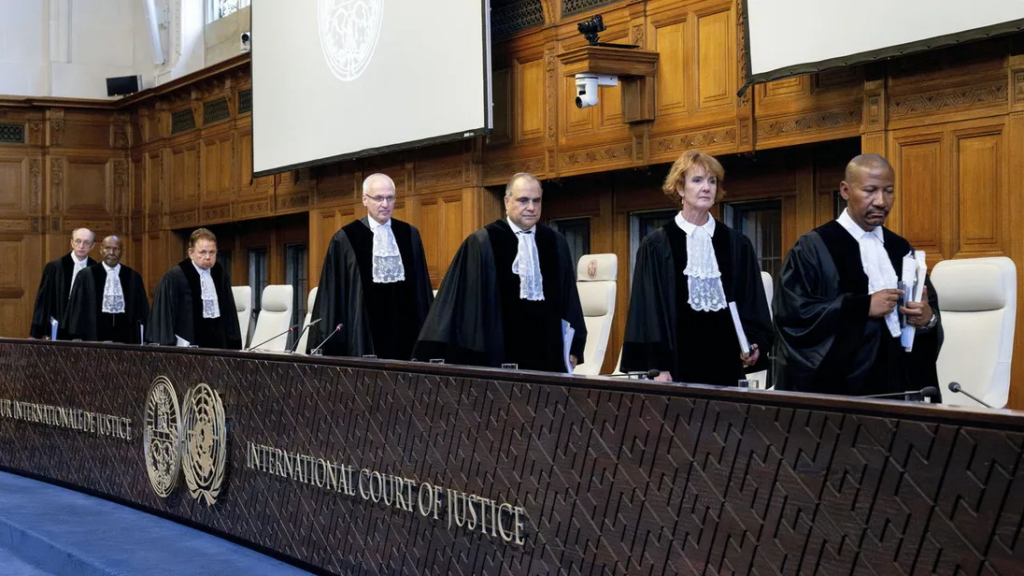
This in itself reframes considerably the terms of the debate, making Israel, by definition, the aggressor in Gaza and other Occupied Territories.[2]
It is also indisputable that Israel has done everything to actually provoke Palestinian resistance and retaliation, not only through its persistent illegal occupation, but also by enacting unacceptable policies in the Occupied Territories for decades, most significantly by creating inhumane living conditions in the Gaza Strip, which led qualified international observers from the most disparate backgrounds to describe Gaza as the largest “open-air prison” in the world.

[Source: gvwire.com]
More gravely, Israel’s official account of the October 7 events has already been challenged in critical respects, beginning with the exposure of the highly flawed coverage of Hamas’s alleged atrocities to the cover-up and understatement of the Israel Defense Forces’ role in causing Israeli civilian deaths that day, including through the implementation of the controversial “Hannibal Directive,” which carries the strong potential to endanger civilian lives.

These arguments are compelling.
However, a largely overlooked yet absolutely critical aspect in this debate is that, based on the actual record of Israel’s foreign policy, it is the whole Israeli government version of not only its relationship with Hamas, but of its real inclination toward the entire Palestinian peace process and statehood that is profoundly and overwhelmingly deceptive and untruthful.
Tel Aviv’s case rests on two underlying assumptions:
First, Israel has been willing to have peaceful relationships with the Palestinians and concede, in principle, the creation of a Palestinian state, but it has been prevented from doing so because of the security threats that Palestinian “terrorist” or radical groups presented to the Israeli state;
Second, and as a logical corollary, Israel has been dealing with the Palestine matter in good faith, attempting to support Palestinian actors who would pursue stability and peace with Israel, while opposing and undermining more radical and militant groups like Hamas, ostensibly sworn enemies of the state.
As it happens, both assumptions are overwhelmingly, if not entirely, baseless.
Highly sensitive disclosures from top Israeli insiders, combined with decisive historical and investigative developments, point to quite a different and inconvenient truth, which fits a consistent pattern of overstatement, manipulation and exploitation of external threats conceived to justify Israel’s denial of a Palestinian state and even expansionary territorial policies.
In this context, a crucial role has been played by Israel’s actual relationship to “terrorist” groups such as Hamas.
The real story of Israel’s strategy toward Hamas—that Israeli officials did not bother to conceal in astoundingly frank disclosures—is one of carefully devised support and manipulation, aimed at undercutting the peace process and preventing the establishment of a Palestinian country.
It is now indispensable to retrace this strategy and expose it.
Israel and Hamas, a matter of policy
A completely eclipsed, yet plain, historical fact is that Israel was instrumental in establishing Hamas and facilitate its rise to power.
As investigative journalist Mehdi Hasan recalled, senior Israeli officials made many candid admissions to that effect.
Brigadier General Yitzhak Segev, Israel’s military governor in Gaza in the early 1980s, “told a New York Times reporter that he had helped finance the Palestinian Islamist movement,”[3] which would eventually morph into Hamas, “as a ‘counterweight’ to the secularists and leftists of the Palestine Liberation Organization and the Fatah party, led by Yasser Arafat.”


The Israeli government gave me a budget,” Segev admitted, “and the military government gives [sic] to the mosques.”
This revelation hardly stands alone.
“Hamas, to my great regret, is Israel’s creation,” confided in 2009 to the Wall Street Journal reputed Israeli scholar Avner Cohen, who was previously in charge of religious affairs in Gaza for the Israeli government (until 1994).
Cohen confirmed that support for Hamas was part of a specific “divide and rule” strategy, aimed at counterbalancing more moderate forces within Palestinian resistance.
Cohen had advised against the hazardous policy of supporting Palestinian Islamists against Palestinian secularists, writing to his superiors, in reference to the militant Islamist faction, that Israel should focus “its efforts on finding ways to break up this monster before this reality jumps in our face”.
His advice was ignored.
As the Wall Street Journal noted, the exact impact of Israeli policies in propelling Hamas to power is disputed within Tel Aviv’s military and intelligence establishment, with senior officials disagreeing over its consequential nature.
However, while it is clear that Hamas had its own independent agenda and historical genesis, the question here is the real reason Tel Aviv would be interested in supporting an organization with a declaredly militant agenda against Israel, in opposition to more moderate Palestinian forces.
Why would Israeli choose to back up radical group in the Palestinian territories, at the possible expense of its own security?
Such ostensibly counterintuitive strategy acquires much more sense, however, if it is finally accepted that powerful factions in Israel’s establishment never wanted to pursue a peaceful course of action with the Palestinians, most particularly if it involved the creation of a Palestinian state on the pre-1967 borders, and manipulated the alleged terrorist menace to avert that outcome.
It is worth recalling at this juncture that, as reported by CovertAction Magazine, the exploitation of terrorism for political purposes—unrelated to country security—is actually quite a common practice in the shadowy world of covert warfare.
In a significant precedent concerning Israel, high level intelligence insiders revealed that the notorious terrorist Carlos “the Jackal”, affiliated with the Popular Front for the Liberation of Palestine (PFLP), had been protected by Israeli operatives since the 1970s, for the specific purpose of allowing him to continue his terrorist activities and hurt the Palestinian cause in the public’s eye.

Senior French intelligence officer Ivan de Lignières, who had been directly involved in the tracking of Carlos, disclosed that “men under his command had identified the Jackal but could not act because they knew that he was ‘under surveillance by Algerian and Israeli intelligence services.’”
“The light was always red for Carlos,” de Lignières elaborated, “because of the Israelis. The latter appeared to protect him. Carlos had been the poster boy to discredit the Arabs and beef up the case of Israel. Any time we got close to [Carlos], we would see [the Israelis] around the corner.”[4]
With this background in mind, it may be easier to process the even more disturbing information which has surfaced in relation to Israel’s highly manipulative strategy.
A remarkable case is the testimony of Victor Ostrovsky, probably the most important Mossad whistleblower in history.
Born in Canada into a Zionist family, Ostrovsky was raised in Israel and served in the country’s armed forces, making his way to the rank of Navy captain before the Mossad recruited him as a case officer in 1979.

Almost a unique case in intelligence history, Ostrovsky’s memoirs on his Mossad experiences[5] provide invaluable insights into the inner workings of intelligence agencies and a trove of hyper-sensitive revelations, which vastly exceed the Israeli-Palestinian issue.[6]
Ostrovsky went public repeatedly to indict the overbearing and nefarious influence of the Mossad, not only on Israel’s foreign policy, but on the foreign policy of the U.S. as well.
In the first of his memoirs, By Way of Deception, Ostrovsky revealed that, since the early 1980s, the Israeli intelligence establishment had been seeing Arafat as ever more dangerous, precisely because of his increasing moderation and orientation to achieve Palestinian goals through diplomacy.
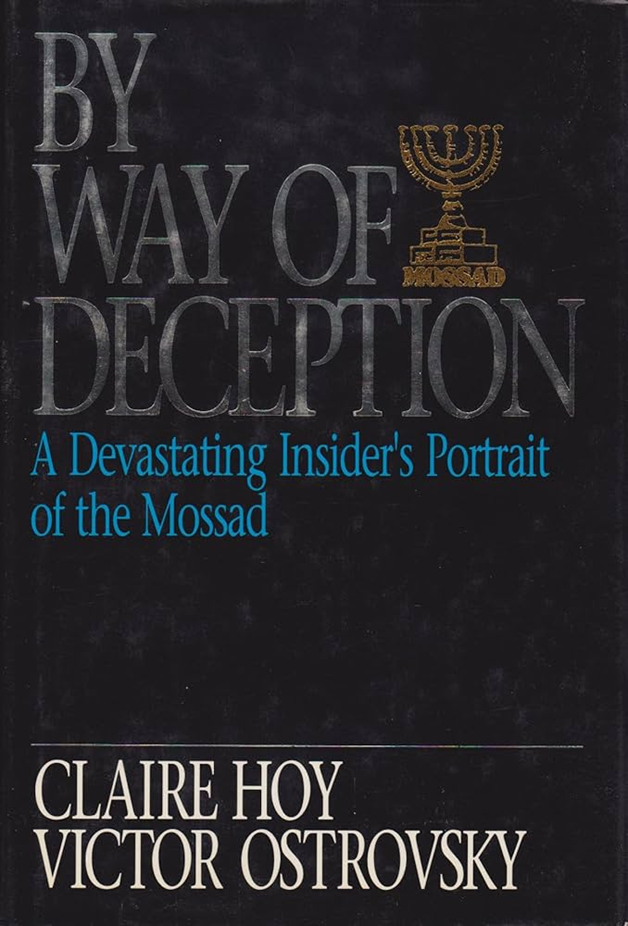
The rationale was that, with a Palestinian leadership more amenable to compromise and renouncing “terrorism,” it would have been much more difficult for Israel to invoke the security pretext to deny concessions to the Palestinian side.
In recalling the background and events surrounding Israel’s invasion of Lebanon in 1982, Ostrovsky lifted the veil on how the Mossad perceived Arafat’s role at the time and the true attitude of Israeli hardliners toward the conflict with the Palestinians.
“In 1974, Arafat had denounced terrorist acts by his organization outside the borders of Israel, chiefly in Europe,” noted Ostrovsky, and, “while Palestinian terrorism did continue in Europe, it was conducted by a variety of factions opposed to Arafat.”
“One of Arafat’s biggest problems was the Black September Organization (BJO) headed by Sabri Al Banna, better known as Abu Nidal. The BJO, who are Palestinian Muslims, have a religious fervor that makes them more dangerous than many of the other factions.…It was the BSO’s attempted assassination of Shlomo Argovê, Israel’s ambassador to London, in 1982, that Israel used as an excuse to launch a full-scale war against Lebanon.”


“At the time.” Ostrovsky continues more ominously, “the right wingers in the Mossad were pushing to have Arafat killed. Their argument was that if they assassinated Arafat, the Palestinians would replace him with someone more militant who would not be acceptable to the West, or to the left in Israel, and therefore there would be no peaceful solution to the problem.”[7] [Emphasis added.]
These highly revealing comments hardly require elaboration.
It is still indispensable to note how flawlessly they fit the manipulative and destabilizing strategy pursued by segments of Israel’s power establishment.
They also shed a particularly troubling, yet even more revealing, light on the political choice to support Hamas vis-à-vis Arafat, which closely overlaps, in terms of timeline, with the Mossad’s plan to get rid of the PLO leader.
More sinisterly, Ostrovsky made clear that such a strategy remained an active contingency plan in the Mossad.
Writing in 1990, Ostrovsky claimed that, “by mid-1986…Arafat had become too much of a public figure. The Mossad didn’t have an excuse to get him. But it’s still not off the agenda. The moment it’s feasible, they’ll do it.” [Emphasis added.]
Arafat passed away in 2004, following a sudden illness. Subsequent investigations pointed to the assassination of the legendary Palestinian leader.[8]

However, the obvious ethical, legal and humanitarian issues aside, who was ultimately responsible for Arafat’s death is not strictly relevant to the defining strategic question discussed herein.
Ostrovsky’s disclosures, which preceded the passing of Arafat by 14 years, are and remain less relevant for the possible identification of Arafat’s assassins than they are for exposing the true nature and purpose of Israel’s power establishment.
In the ultimate analysis, we have top-level insider testimony which openly singles out the highest echelons of Israeli intelligence as seriously considering Arafat’s assassination, for a rationale consistent with their long-held strategic goal of preventing peaceful, successful negotiations with the Palestinians.
A strategy that carries on in our times.
Keep your enemies closer—Israel drops the mask about its Hamas strategy
Well into the 21st century, not only has the strategy of Israel’s hawks toward Hamas not changed, it has actually been pushed to its most extreme ends.
This should hardly come as a surprise, considering the consolidation of power in the past decades into the hands of one of Israel’s harshest hardliners—Benjamin Netanyahu himself.
Netanyahu has turned out to be a most committed advocate of Israel’s support for Hamas.
More astonishingly, the Israeli leader has been quoted as saying that protecting and even reinforcing Hamas was a calculated strategy, aimed at thwarting the creation of a Palestinian state.
In March 2019, the Jerusalem Post quoted a confidential source in the Likud Party who had attended a Knesset faction meeting, revealing that Netanyahu had conceded that “Israel’s regular allowing of Qatari funds to be transferred into Gaza…is part of a broader strategy to keep Hamas and the Palestinian Authority separate.”
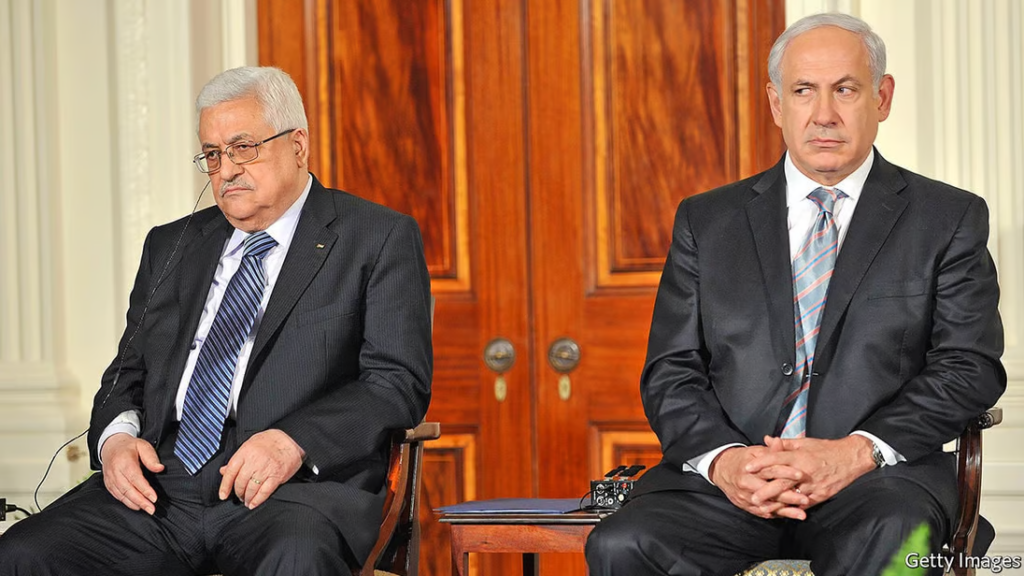
Netanyahu went much further, according to the Likud source, arguing explicitly that “whoever is against a Palestinian state should be” in favor of financing Hamas in Gaza “because maintaining a separation between the PA in the West Bank and Hamas in Gaza helps prevent the establishment of a Palestinian state.”
These explosive disclosures, while not drawing any significant attention in Western mainstream media at the time, have been widely reported and discussed by the Israeli and Middle East press, which placed them squarely in the context of deliberate planning on the side of the Likud Party and Israeli hardliners.
The Times of Israel noted that, “while Netanyahu does not make these [sic] kind of statements publicly or officially, his words are in line with the policy that he implemented.”
As a matter of fact, “the various governments led by Benjamin Netanyahu took an approach that divided power between the Gaza Strip and the West Bank—bringing Palestinian Authority President Mahmoud Abbas to his knees while making moves that propped up the Hamas terror group.”
Accordingly, “Hamas was upgraded from a mere terror group to an organization with which Israel held indirect negotiations via Egypt, and one that was allowed to receive infusions of cash from abroad.”
Not only have Likud-led governments allowed for massive Qatari funding of Hamas in Gaza (estimated to be in the “millions”), but they went as far as ignoring security breaches against Israel.
“Since 2014, Netanyahu-led governments have practically turned a blind eye to the incendiary balloons and rocket fire from Gaza,” The Times of Israel noted.
This highly manipulative strategy was harshly contested by Israeli ultra-nationalist leaders such as Avigdor Lieberman, a former foreign and defense minister under Netanyahu, who stated bluntly that the payments to Hamas were a “miserable decision,” making it “the first time Israel is funding terrorism against itself.”

Following the October 7 tragedy, this reckless policy inevitably came to haunt Netanyahu.
Under intense pressure and criticism for the debacle, Israel’s prime minister reacted by dismissing the claim that he ever wanted to strengthen Hamas as “ridiculous” without, however, disproving the veracity of the 2019 disclosures.
According to high-level Israeli insiders, however, Netanyahu’s denials do not stand up to his own record.
In December 2023, The New York Times, not exactly the most antagonistic source to the State of Israel, disclosed unusually candid comments on the side of senior Israeli officials.
Shlomo Brom, a former general and deputy national security adviser, “said an empowered Hamas helped Mr. Netanyahu avoid negotiating over a Palestinian state.”

“One effective way to prevent a two-state solution is to divide between the Gaza Strip and the West Bank,” Brom was quoted as saying.
“The division gives Mr. Netanyahu an excuse to disengage from peace talks, Mr. Brom said, adding that he can say, ‘I have no partner.’”
The Times conceded that, while “Mr. Netanyahu did not articulate this strategy publicly,” other Israeli officials on the “political right had no such hesitation.
Bezalel Smotrich, a far-right politician who is now Mr. Netanyahu’s finance minister, put it bluntly in 2015, the year he was elected to Parliament.
“The Palestinian Authority is a burden,” he said. “Hamas is an asset.”[9]

Politico cited Michael Milshtein, a top military intelligence official, as confirming that Netanyahu allowed “Qatar to channel hundreds of millions of dollars over the years to Gaza, much of it likely spent on the faction’s military wing.”
Former Israeli Prime Minister Ehud Olmert was no gentler as he placed “the courtship of Hamas squarely on Netanyahu.”
“In the last 15 years, Israel did everything to downgrade the Palestinian Authority and to boost Hamas,” Olmert said.
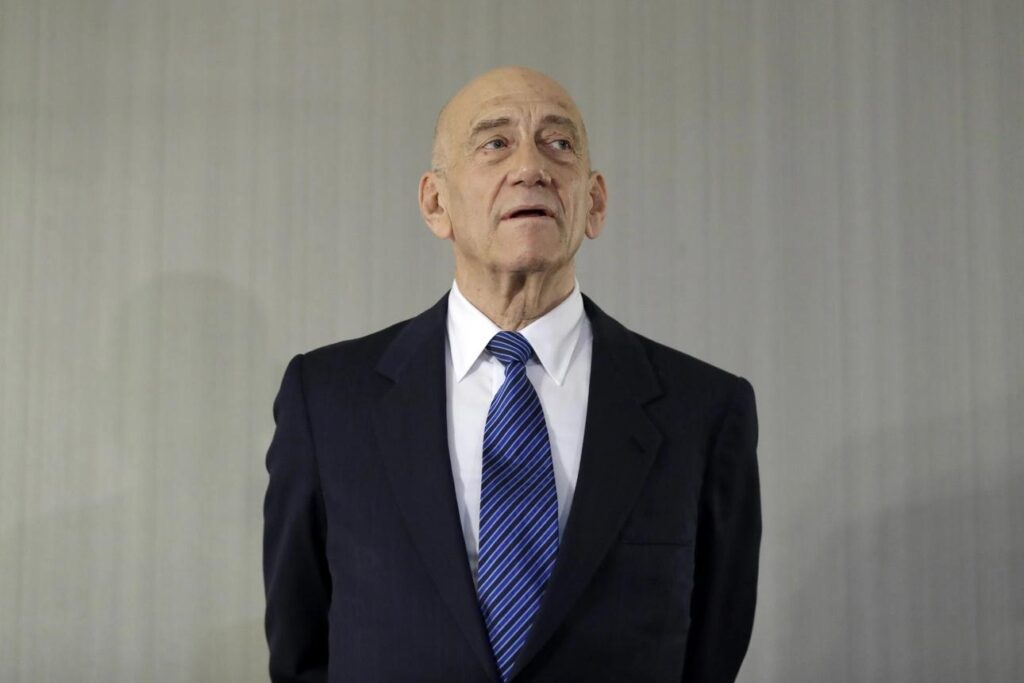
If the official line concerning the relationship between Israel and Hamas, which is still designated as a terrorist organization—or any other “terrorist” group supporting the Palestinian cause, for that matter—had any resemblance to the truth, the Likud’s exposed support for Hamas should be seen as completely aberrant and counterintuitive.
Yet, such a strategy is far more understandable if one factors in what the real goals of hawks like Netanyahu have always been: averting the creation of a Palestinian state and expanding Israel’s territorial possessions.
Israel’s increasingly transparent record is bound to endorse this conclusion.
Historiographical developments, drawing overwhelmingly on Israeli scholarship and archives, have cast an entirely new light on previously misunderstood historical precedents, most notably the 1967 war, showing that Israel had long entertained far more aggressive and expansionary intentions than previously known.
This body of evidence only reinforces the cascade of increasingly assertive revelations from Israeli officials, laying bare their blatant opposition to any meaningful peace process with the Palestinians and the establishment of a Palestinian country.
The disingenuous narrative of Israel as an honest broker seeking peace is finally unraveling.
Israel’s wars: pre-emptive security or offensive expansion?
It has now been almost 60 years since Israel began its illegal occupation of the Palestinian territories.
Even before October 7, 2023, Israel’s complete withdrawal from those territories was nowhere in sight.
The perpetual story, emanating from Israeli officials opposing the creation of a Palestinian state, is that such a sovereign entity would represent an unacceptable threat to Israel’s security. Hostile and powerful Palestinian groups, backed by equally if not more aggressive Arab allies are bent on destroying Israel—this interpretation goes – which is, therefore, entirely justified in denying the creation of a functioning and militarized Palestinian state on Israeli borders, and at least part of the conquered territories would be necessary to guarantee Israel’s security perimeter.
The least that one may say is that, even if taken at face value, this version has never been a paradigm of credibility.
As Israeli revisionist historians[10] have acknowledged, such an argument has always been flawed, particularly as it conceals Israel’s original responsibility in creating the “Palestinian refugees” problem in the first place and then conflates the legitimate resistance to Israel’s own aggression and occupation with “unprovoked attacks,” blatantly disregarding or distorting the historical and legal record warranting the legitimacy of a Palestinian state.

Stalling a supposedly sincere negotiation for the creation of a Palestinian country for more than half a century that Israel does not have the right to single-handedly deny anyway hardly adds to its believability.
However, progress in historical research has challenged Israel’s official line in a more fundamental respect.
What the record suggests is that, at critical times in Israel’s history, Israeli authorities have at best exploited the supposed security threat and, at worst, simply relied on Israel’s assumed military superiority in order to pursue a policy of territorial conquest which, in fact, had been in place since the foundation of the State of Israel.
A crucial case in point is the 1967 war itself, the very conflict which gave rise to the occupation of Palestinian territories lasting to our times.
A powerful myth, which continues to this day, is that, in June 1967, Israel risked “annihilation” by the surrounding Arab countries, which justified the “pre-emptive” attack on its neighbors, approved by President Lyndon Johnson, and ultimately sparked the “Six-Day War” and Israel’s subsequent annexation of the Sinai Peninsula, Gaza Strip, West Bank, Old City of Jerusalem, and the Golan Heights.
On June 12, 1967, Israeli Prime Minister Levi Eshkol famously stated: “The existence of the Israeli state hung on a balance…but the hopes [of the Arab leaders] for the destruction of Israel have been shattered.”

A careful review of the actual historical record points to quite a different truth.
Senior Israeli officials eventually admitted that not only was Israel not under any “existential threat” in 1967, but that plans to annex the territories conquered in the war had been drawn up years before the conflict occurred.
As historian Sylvain Cypel notes in his essay “How the Israeli Generals Prepared The Conquest Long Before 1967,” only five years after the 1967 war, top military officers went on the record as categorically dismissing the “annihilation risk” claim.
“The hypothesis of extermination was never envisaged in any serious meeting,” former Air Force Commander, Deputy Chief of Staff and future President of Israel Ezer Weizman was quoted as saying.
Former Chief of Military Intelligence and future President of Israel Chaim Herzog, as well as General Haim Bar-Lev, the Chief of the General Staff himself, reiterated the same point to the Israeli press, while General Mattityahu “Matti” Peled, in charge of logistics within the General Staff, was even more categorical:
“To claim that the Egyptian troops massed at the border could in any way threaten the existence of Israel is not only an insult to the intelligence of any person capable of analyzing this type of situation, but above all an insult to the Israeli army.…All that talk about the huge danger we were in…was never taken into account when we were doing our calculations before the fighting began.”

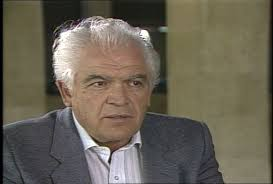
Cypel points out that, before the 1967 war, Israeli generals had shown absolute confidence that their country would prevail in a war against their Arab neighbors.
They were comforted in this assessment by the CIA’s Chief of Station in Tel Aviv, John Hadden, who concluded that, if Israel went to war, it would be victorious “in six to ten days.”[11]
Such self-assurance was not due (only) to hubris.
The record shows that, long before the 1967 war, top military brass in Tel Aviv had obsessively correlated possible conflicts with neighboring states with the opportunity to enlarge Israel’s territorial possessions.
Building on Israeli scholarship and newly available archival records, Israeli historian Guy Laron has provided a remarkable contribution to the understanding of this under-reported, yet fundamental, fact in his book The Six-Day War.[12]

In the significantly titled chapter “Expanding Israel’s Borders,”[13] Laron explains that, since 1948, the Israeli military leadership had drafted specific contingency plans to increase Israel’s territorial gains at the expense of its neighbors.
This section of Laron’s work is of foremost importance and deserves to be quoted at length.
In 1963, after Prime Minister Levi Eshkol came to power, he had a series of meetings with senior military officers from the General Staff, who made him privy to startling disclosures.
Eshkol “found out, to his surprise, that the generals were eager to use the next war to expand Israel’s borders.”
Then-IDF Chief of Staff Tzvi Tzur argued that the Israeli army should be “reinforced, so that in the next war, its various units would be able to conquer Sinai, the West Bank and Southern Lebanon.”

Then-Deputy Chief of Staff Yitzhak Rabin agreed, while Ezer Weizman, Air Force Commander at the time, was even more assertive, claiming that “security-wise, the IDF has to expand [Israel’s] borders, whether it fits the government’s approach or not.” [Emphasis added.]
Weizman took this matter a step further and is quoted as having made the intriguingly prescient and unsettling comment that, in the next five years, Israel “would have to think seriously about launching a preventive war.” [Emphasis added.]
These quite self-explanatory disclosures single-handedly blow away the theory depicting Israel’s security and foreign policy as merely defensive, responsive to the aggressive policies of its neighbors.
As a matter of fact, since 1948, Israel had constantly attempted to expand its borders, to be frequently pushed back only by external political forces.
As Laron recalls, after the 1948 war, Israel comfortably invaded part of Sinai and only Great Britain’s ultimatum compelled the Israelis to retreat. Simultaneously, Israel was also prevented from conquering the West Bank, which had been almost annexed, because the Israeli government ultimately rejected Ben Gurion’s plan.
As a result, “Ben Gurion and the generals were left with the bitter taste of missed opportunities.”
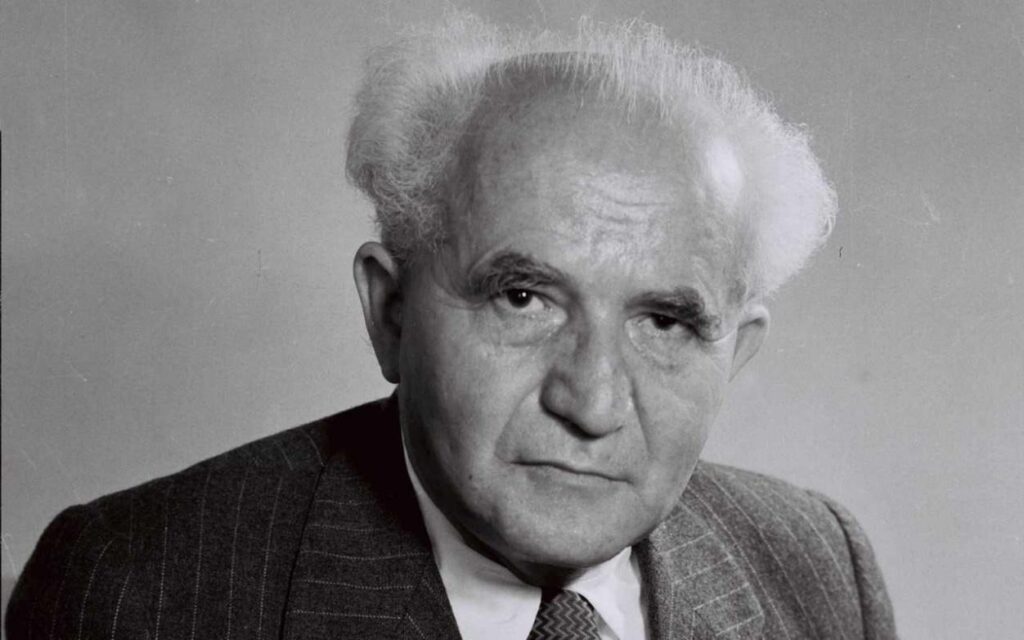
After that, “Ben-Gurion was in the habit of describing the post-1948 borders as ‘unbearable.’”
It can therefore be inferred that, from an Israeli standpoint, the 1956 Suez Crisis, resulting in the Jewish State being forced again to withdraw from Egyptian territory, hardly took place in a vacuum.
Israeli military leadership continued to relentlessly draft and strongly advocate for plans aimed at the “defensive” annexation of neighbors’ territory throughout the 1948-1963 period and beyond.
A significant case is given by the “the contingency plans from 1953, which envisaged the annexation of Sinai, the West Bank, and the Golan Heights,” which “were updated and rewritten in 1957.”
Despite Ben-Gurion’s fluctuations in his support for an expansionary foreign policy, Israel’s “Planning Department in the General Staff kept its war plans very much intact, merely producing a new version in 1963.”[14]
What Eshkol heard four years before the 1967 war was not random rumbling from overly self-confident military officials, but a clean-cut stance fitting a consistent pattern of strategy.

Cypel, poignantly, quotes General Mordechai Hod who, as commander of the Israeli Air Force, had conducted the obliterating campaign against Egyptian, Syrian and Jordanian forces on June 5, 1967, as stating bluntly that, “for sixteen years, [the Israeli military] had been planning what took place in those first 80 minutes [of the June 5th attack]. We lived with that plan, we ate with it, we slept with it. We never stopped improving it.”
Focusing on the interaction between the Israeli political leadership and their military counterparts, it is particularly troubling and highly significant that the involved military officers were hardly simply “suggesting” a particular course of action.
What the record reflects is immense pressure from Israeli military leadership on Israeli governments for them to proceed with a belligerent and expansionary policy, amid an environment that frequently resembled a quasi-coup d’état.
The above-quoted words of future Israeli President Ezer Weizman—“security-wise the IDF has to expand [Israel’s] borders, whether it fits the government’s approach or not”—resonate most ominously in this context.
It is a well-documented fact that Prime Minister Eshkol was heavily strong-armed into launching the “pre-emptive” strike that sparked the June 1967 war.
Quoting Israeli historian Tom Segev, Cypel portrays the virtual consensus of Tel Aviv’s military leaders in the weeks preceding the war.

“The General Staff, led by Rabin, is adamant: if Israel fails to react, its ‘deterrence capacity’ will suffer irremediable damage.
Confident of victory, General Ariel Sharon proclaimed that the government could not afford [to] pass up an ‘historic opportunity’ to enlarge the country,” while General Yigal Allon went as far as offering to “invent a pretext to attack.”
In describing the capitulation of Israel’s Prime Minister to the “the incessant pressure of the military” (among other factors), Laron points out that, for Eshkol, refusing to approve the war plan against Egypt would amount to “much more than a loss of face. It involved a wholesale examination of the way Israeli officers had been thinking about the war ever since 1948.”
As the generals made plain, that thinking was hardly defensive.
Laron goes on to quote an article written by Israeli General Moshe Dayan in April 1967, which does not leave much room to speculative guessing: “Although the Israeli army’s official title is ‘Israel Defense Forces,’ it is not a defensive force…the most visual manifestation of the new approach…is the lack of fortifications and fences along the borders…simply put, Israel Defense Forces are an aggressive offensive-minded fighting force. The Israeli military implements this approach in its thinking, planning and Modus Operandi.”[15]

Laron lends credit to the view that the events surrounding the 1967 war resembled a “very Israeli putsch.”
How this revisionist scholarship critically contributes to the debunking of deep-seated narratives concerning Israel’s policies should be transparent.
Yet, the least that one may say is that the work of historians such as Laron, whose book was still published by one of the most prestigious universities in the United States, has hardly received the attention it deserves.
This will not come as a surprise to observers of mainstream media, which continue to prove hopelessly biased in favor of Israel.
The complete burial of the above-noted scholarly reports on Israel’s genocidal actions in Gaza, as well as the most recent exposure of the internal fight at the BBC over Gaza coverage, are just more powerful reminders of this state of affairs.
However, the movement for truth is inexorably gaining momentum and catching up with the staunchest deniers.
The highly material historiographical achievements noted herein provide one more crucial piece in an increasingly clear mosaic, concurring with just as critical investigative developments in exposing Israel’s veritable policies.
It is now necessary to draw the inevitable conclusions on their significance for Israel’s relations with the Palestinians and Middle East stability.
Connecting the dots: the peace that could not be
September 13, 1993. An epochal event is unfolding on the South Lawn of the White House.
Israeli Prime Minister Yitzhak Rabin and PLO Leader Yasser Arafat, nemesis for as long as they could remember, are shaking hands before a beaming U.S. President Bill Clinton.
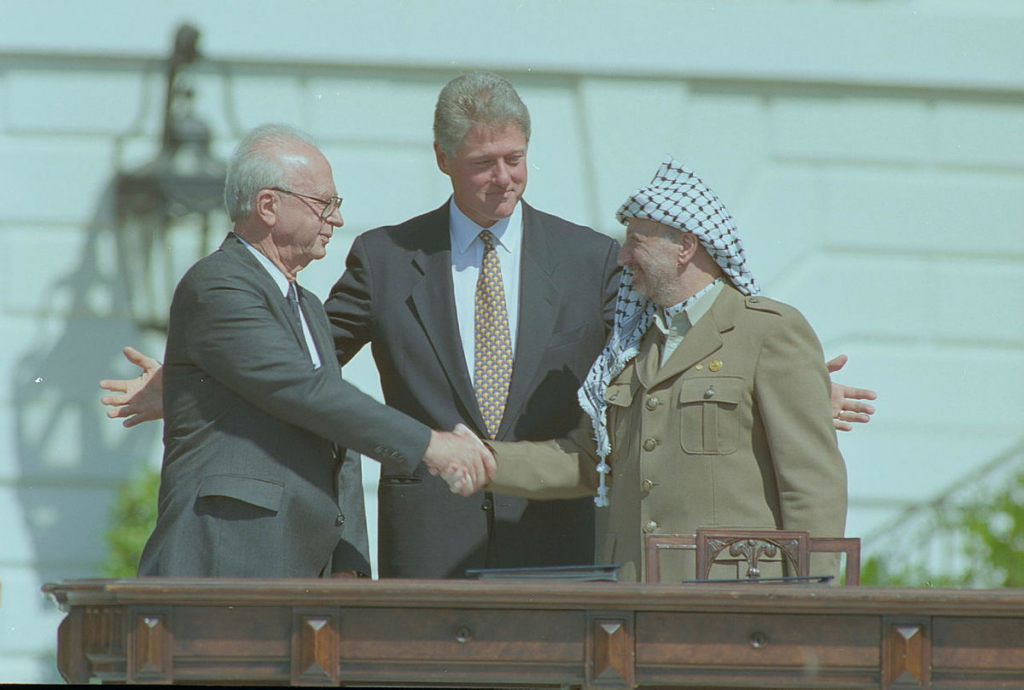
The momentous occasion is the signature of the “Declaration of Principles on Interim Self-Government Arrangements,” the framework of what were to be commonly known as the “Oslo Accords,” which established the Palestinian Authority (PA) and should have paved the way to the creation of an independent Palestinian state.
It was not to be.
Powerful forces were arraying to undermine and disrupt the ongoing peace process in every feasible way.
Absolutely furious at Rabin for enabling what they saw as an existential threat to Israel’s strategic interests, Israeli hardliners unleashed the most virulent opposition to the Oslo agreements.
Unsurprisingly, Netanyahu was one of the most vociferous, if not violent, critics of Rabin’s plans.
As The New York Times reported, “on March 4, 1994, at an anti-Oslo protest, Netanyahu led a procession bearing a coffin with the inscription, ‘Rabin kills Zionism.’”
In the same paper of record, Netanyahu also compared Rabin to Neville Chamberlain.

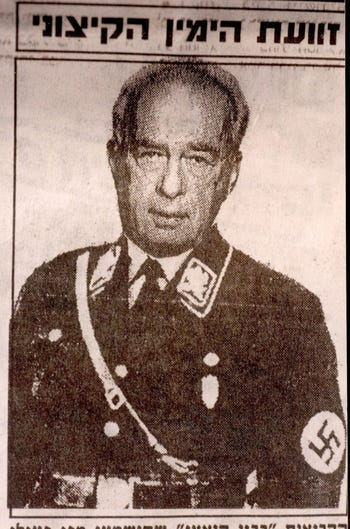
“Prime Minister Rabin chose to favor Arafat and the well-being of the people of Gaza over the security of Israeli citizens,” Netanyahu said after 21 Israelis and one Dutch citizen were killed in a terrorist attack in Tel Aviv on October 19, 1994.
In truth, the Oslo agreements had been strongly opposed by influential parties on both sides.
On the Palestinian end, many reproached Arafat for having given too much away in terms of Palestinian rights and aspirations, basically to have capitulated to Israel—an accusation that the Palestinian leader had by then endured for quite a long time.

The end game is well-known.
On November 4, 1995, Yitzhak Rabin was assassinated. Following a tortuous, exceptionally turbulent, process, particularly during the tenure of Netanyahu as prime minister (1996-1999), the Oslo plans were finally derailed.
An exhaustive analysis of the causal process leading to the unraveling of the Oslo Accords cannot be conducted herein but, more importantly, might well be immaterial.
In retrospect, a more pertinent question may be whether, as far as the Israeli side is concerned, the Oslo agreements ever stood a chance of success in the first place.
A sober look at the historical record, as exposed above, strongly points to a negative answer.
From the incessant expansionary plans of the Israeli military to the stated strategy in support of Hamas, implemented since the 1980s and sharply stepped up during the long reign of Netanyahu in our times, it is quite plain that the most influential forces in Israel’s power establishment have always been intractably opposed to the (actually moderate) political concessions of the Oslo Accords.
Beginning with the historical background closely preceding the signature of the “Declaration of Principles” in 1993, it is worth recalling what former Mossad agent Ostrovsky disclosed about the plan to have Arafat killed, in order to favor Palestinian factions less willing to pursue peaceful negotiations with Israel.
Writing in 1990, Ostrovsky maintained that the Mossad had not abandoned, but merely postponed, its ominous plan.
That means unequivocally that the idea to take Arafat out was still being considered when the peace process initiated by Rabin was under way.
However, much more damning, if not conclusive, are the candid admissions about the peace process coming from Israeli hardliners, such as Netanyahu himself.
For a long time, the Israeli leader, on official occasions, claimed that he remained committed to a two-state solution to the Palestinian issue.
In a 2015 meeting with President Barack Obama, for instance, Netanyahu reiterated the familiar line, claiming that he remained “committed to a vision of peace of two states for two peoples.”
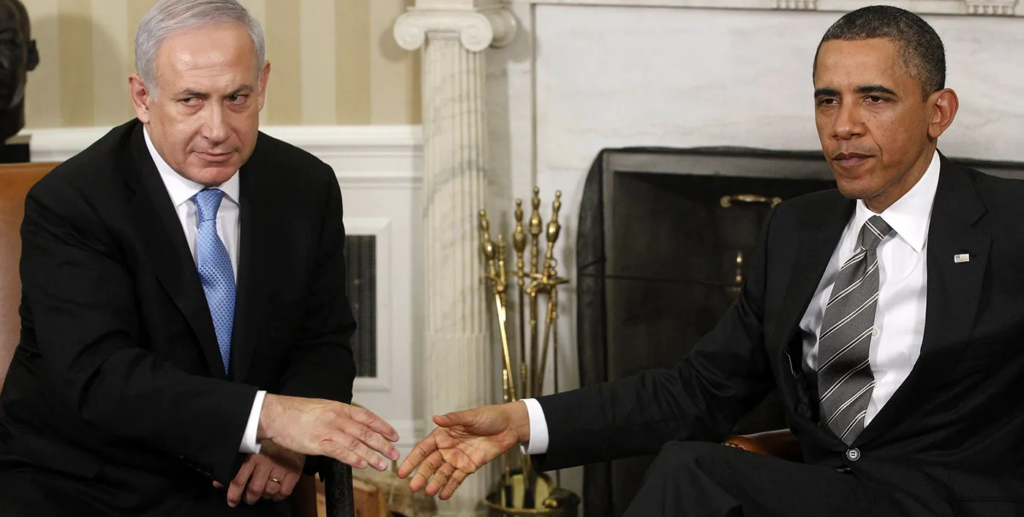
Bibi’s actual record clearly shows otherwise.
Netanyahu’s consistent actions as political leader and even his own personal confessions unequivocally demonstrate his indestructible opposition to the creation of a Palestinian state.
As The Intercept noted, just days before the meeting with President Obama, the Israeli government had authorized the construction of 2,200 more housing units in the occupied Palestinian territories, hopelessly undermining one more time the same “two-state solution” that Netanyahu claimed to support.
Shortly before the Israeli election of the same year, Netanyahu had been even more transparent, bluntly stating to the Israeli press that “a Palestinian nation would never be formed” as long as he was prime minister, arguing that “anyone who is going to establish a Palestinian state, anyone who is going to evacuate territories today, is simply giving a base for attacks to the radical Islam against Israel.”
The continuous illegal expansion of Israeli settlements in Palestinian territories, combined with other provocative actions that could inevitably spark Palestinian resistance, were again lost on the Israeli leader, along with the most basic norms of international law.
However, what is essential to remember about this episode is that, as chief Palestinian negotiator Saeb Erekat pointed out in his reaction to Netanyahu’s remarks, the “Israeli Prime Minister’s stance [was] nothing new. Netanyahu has done everything possible to bury the two-state solution.”

The evidence shows exactly that.
In 2010, Israeli media reported about a particularly revealing, and highly embarrassing, episode, where Netanyahu was exposed as confessing that, during his first term as prime minister, from 1996 to 1999, he had deliberately torpedoed the Oslo agreements, while entirely deceiving his American counterparts in the process.
Israeli Channel 10 News had aired a secretly recorded video concerning a 2001 meeting between Netanyahu and West Bank settlers, where the Likud leader, unaware his comments were being taped, delivered an enlightening analysis of his actual role.

“They asked me before the election if I’d honor [the Oslo Accords],” Netanyahu said.
“I said I would, but…I’m going to interpret the accords in such a way that would allow me to put an end to this galloping forward to the ’67 borders. How did we do it?
Nobody said what defined military zones were. Defined military zones are security zones; as far as I’m concerned the entire Jordan Valley is a defined military zone. Go argue,” Netanyahu continued, before finally boasting: “I de facto put an end to the Oslo Accords.” [Emphasis added.]
Such remarks are of self-evident significance, but it is equally noticeable that the Israeli leader was just as candid and contemptuous toward the leverage that U.S. administrations were attempting to exercise to see the Oslo Accords enforced.
“I know what America is. America is a thing you can move very easily, move it in the right direction. They won’t get their way,” Netanyahu said on tape.
Following the October 7 events, Netanyahu boasted publicly that he was proud he had “prevented the establishment of a Palestinian state” during his 16 years in office, “because today everyone understands what this Palestinian state could have been now that we saw the small Palestinian state in Gaza,” implying that it was Hamas’s attack that ultimately vindicated his long-term opposition to Palestinian statehood.
Quite conveniently, Netanyahu left out not only his real views about any peace process with the Palestinians in the first place but, more importantly, his own role in intentionally supporting the very organization that he was now blaming for the outbreak of hostilities, at the expense of Palestinian institutions that were more amenable to conduct peaceful negotiations.
Experienced insiders were quick to expose this deep-seated contradiction.
In a direct reply to the Israeli prime minister, former U.S. Ambassador to Israel Martin Indyk openly accused Netanyahu of having “lied to world leaders in the past when he spoke of supporting a two-state resolution to the Palestinian conflict.”

“So all those promises to world leaders about his commitment to a two-state solution were a bunch of lies. And all those enablers who swore Bibi was serious about peace have some explaining to do,” the ambassador was quoted as saying.
Indyk pointed out that the prime minister’s intentions had been consistent since the Oslo Accords: ”[Netanyahu had] always intended to destroy Oslo and therefore the denigration and choking of the [Palestinian Authority] became an essential part of the effort even as the PA cooperated in maintaining Israeli security in the West Bank.”
Israeli scholar Avi Shlaim was even more unforgiving about the real reasons for the unraveling of the Oslo Accords that he had defended opposite Edward Said in the London Review of Books.
Writing in retrospect in 2013, Shlaim, while acknowledging the Oslo Accords’ flaws, unflinchingly singled out the Israeli hardliners, notably the Likud leaders, as the main culprits for the process’s ultimate undoing.
Recalling that the illegal expansion of Israeli settlements had continued unabated and actually exploded after 1993 (the signature year of the “Declaration of Principles”), Shlaim noted that “the failure to proscribe settlement expansion while peace talks were in progress” was precisely the main fault of the Oslo Accords.

“Oslo faltered and eventually broke down because Likud-led governments negotiated in bad faith,” continued the historian, before concluding that “the much-vaunted peace process…was worse than a charade: It provided Israel with just the cover it was looking for to continue to pursue with impunity its illegal and aggressive colonial project on the West Bank.”
Indeed, Israel’s deliberate continuous policy abetting settlers’ expansion and violence in Palestinian territories, coupled with the above-mentioned intentional aggravation of the humanitarian situation in Gaza, had largely preceded and strongly contributed to precipitate the October 2023 breakdown.
As the International Crisis Group noted, “the number of settler attacks” in the West Bank, which had gone “unchecked for years,” “began climbing in late 2022, following the election of Prime Minister Benjamin Netanyahu’s far-right government.”
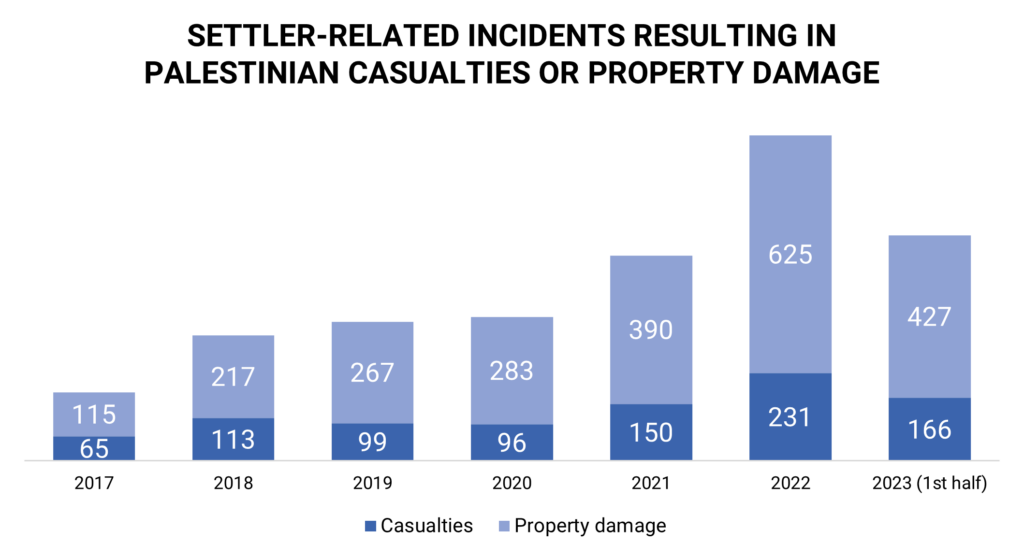
Netanyahu’s recently reiterated opposition to the instauration of a Palestinian state is hardly related to the events of October 7.
The now coherent evidentiary mosaic strongly suggests that the failure not only of the Oslo Accords, but of any meaningful peace process with the Palestinians, far from being the result of contingent political circumstances, and less than ever of Hamas’s “terrorism,” is actually the predictable result of long-term power dynamics in Israel.
Considering the dominant orientation of the real power structure, it is now clear that no Israeli leader’s individual initiative could successfully bring about the establishment of a Palestinian country (particularly on the pre-1967 borders).
The realities of deep politics, that intelligence insiders and whistleblowers have tirelessly contributed to expose, have long debunked the delusional assumption that elected officials are necessarily in control of the political process and determine its outcome.
Israel’s history is indeed a case in point, as the chain of events leading to the 1967 war, just as the virulent scenario faced by Rabin following the signature of the Oslo Accords, powerfully prove.
A different conclusion at this juncture rests on a fatally naïve, if not dishonest, reading of the historical record, which finally turns the Israeli government’s interpretation of October 7 and its aftermath upside down.

In virtually every respect, October 7 did not and could not represent the starting point of the final breakdown of the peace process and the prospects orf a Palestinian state.
What it did incarnate was the culminating, traumatic outcome of carefully concocted strategies and policies, decades in the making, which would allow Israel to reject the creation of a Palestinian state once and for all, and possibly enlarge Israel’s territorial conquests in the aftermath of the subsequent “action-reaction” chain of events.
This now manifest historical and political background casts an even darker light on the increasingly faltering official narrative concerning the very facts of October 7, as much as it does on the growingly assertive actions and declarations of Israeli officials regarding Israel’s expansion in neighboring countries like Lebanon and Syria.
Time will tell how far Israel will be able to go and if the international community will finally get its act together to restrain Tel Aviv’s reckless ambitions.
It is said that the end is just the beginning. October 7 was neither.

In May 2024, following a thorough analysis of the available evidence, a network of human rights scholars, including legal experts from highly reputable academic institutions, such as Cornell, Yale and Boston Universities, issued a report concluding that Israel was indeed committing genocide in Gaza. The report was eventually submitted “to the UN High Commissioner for Human Rights, the UN Special Advisor on the Prevention of Genocide, and the Independent International Commission of Inquiry on the Occupied Palestinian Territory, including East Jerusalem, and Israel.” Defying believability, as of this writing, this report has been almost entirely ignored by legacy media, surviving only in coverage by independent outlets. ↑
Among its many highly significant consequences, the ICJ ruling also fatally undermines Israel’s argument of self-defense against the accusation of genocide in Gaza, which cannot be invoked by an occupying power in the occupied territory. For outstanding analysis, see generally Norman G. Finkelstein, Gaza: An Inquest Into Martyrdom (Berkeley, CA: University of California Press, 2018).
Known as Mujama al-Islamiya (“Islamic Center”) at the time, before changing its name to Hamas (the “Islamic Resistance Movement”) in 1987, prior to the outbreak of the First Intifada. ↑
Quoted in Roger Faligot and Pascal Krop, DST, Police Secrete (Flammarion, 1999), p. 306. ↑
Victor Ostrosvsky, By Way of Deception (St. Martin’s Press New York, 1990); Victor Ostrovsky, The Other Side of Deception (New York: HarperCollins, 1994). ↑Predictably, Ostrovsky has been attacked vigorously, by the Israeli government, obviously, in the first place. However, as intelligence experts would easily recognize, only an authentic insider could have access to the exceptionally sensitive and detailed information that Ostrovsky reveals in his memoirs, which history has repeatedly born out and vindicated. ↑
Ostrovsky, By Way of Deception, 250. ↑
In 2013, Al Jazeera’s documentary “Killing Arafat” exposed damning evidence to that effect, including notably the 108-pages forensic report from Swiss scientists who had exhumated Arafat’s body and detected “at least 18 times the normal levels of radioactive polonium in his remains”. While the actual cause of Arafat’s passing and the possible culprits are still debated heatedly, Ostrosky’s revelations, in retrospect, cast a very dark shadow on the whole episode.↑
Mark Mazzetti, Ronen Bergman, “Israel Long Let Cash From Qatar Prop Up Hamas”, The New York Times, 10 December 2023, A1. ↑
These remarkably include Israel’s “New Historians”, such as Benny Morris, Ilan Pappé and Avi Shlaim, who, beginning in the 1980s, critically challenged the Zionist ideology as well as the traditionalist view of the 1948 war and, therefore, the legitimacy of the foundation of the State of Israel. Israeli historian and journalist Tom Segev, author of a notable revisionist book on the 1967 war, has also been identified with this movement. ↑
Cypel quotes Tom Segev, 1967: Israel, the War, and the Year that Transformed the Middle East (Metropolitan Books, 2007), p.285. ↑
Guy Laron, The Six-Day War (Yale University Press, 2017). ↑
Laron, The Six-Day War, 106-117. ↑
Laron, The Six-Day War, 106-117. ↑
Laron, The Six-Day War, 274, 275. ↑
CovertAction Magazine is made possible by subscriptions, orders and donations from readers like you.
Blow the Whistle on U.S. Imperialism
Click the whistle and donate
When you donate to CovertAction Magazine, you are supporting investigative journalism. Your contributions go directly to supporting the development, production, editing, and dissemination of the Magazine.
CovertAction Magazine does not receive corporate or government sponsorship. Yet, we hold a steadfast commitment to providing compensation for writers, editorial and technical support. Your support helps facilitate this compensation as well as increase the caliber of this work.
Please make a donation by clicking on the donate logo above and enter the amount and your credit or debit card information.
CovertAction Institute, Inc. (CAI) is a 501(c)(3) non-profit organization and your gift is tax-deductible for federal income purposes. CAI’s tax-exempt ID number is 87-2461683.
We sincerely thank you for your support.
Disclaimer: The contents of this article are the sole responsibility of the author(s). CovertAction Institute, Inc. (CAI), including its Board of Directors (BD), Editorial Board (EB), Advisory Board (AB), staff, volunteers and its projects (including CovertAction Magazine) are not responsible for any inaccurate or incorrect statement in this article. This article also does not necessarily represent the views the BD, the EB, the AB, staff, volunteers, or any members of its projects.
Differing viewpoints: CAM publishes articles with differing viewpoints in an effort to nurture vibrant debate and thoughtful critical analysis. Feel free to comment on the articles in the comment section and/or send your letters to the Editors, which we will publish in the Letters column.
Copyrighted Material: This web site may contain copyrighted material the use of which has not always been specifically authorized by the copyright owner. As a not-for-profit charitable organization incorporated in the State of New York, we are making such material available in an effort to advance the understanding of humanity’s problems and hopefully to help find solutions for those problems. We believe this constitutes a ‘fair use’ of any such copyrighted material as provided for in section 107 of the US Copyright Law. You can read more about ‘fair use’ and US Copyright Law at the Legal Information Institute of Cornell Law School.
Republishing: CovertAction Magazine (CAM) grants permission to cross-post CAM articles on not-for-profit community internet sites as long as the source is acknowledged together with a hyperlink to the original CovertAction Magazine article. Also, kindly let us know at info@CovertActionMagazine.com. For publication of CAM articles in print or other forms including commercial internet sites, contact: info@CovertActionMagazine.com.
By using this site, you agree to these terms above.
About the Author
Dario Calvisi is an independent researcher and analyst of U.S. foreign policy.
Dario is from Italy and currently based in Washington, DC.

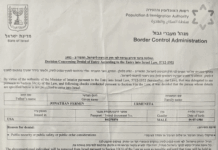
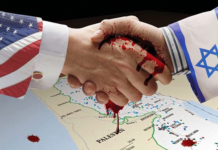
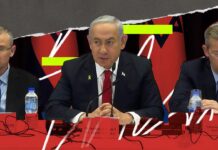




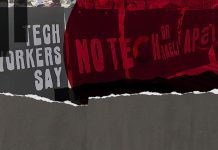


I have not looked at the disturbing videos showing proof of the October 7, 2023 massacre, but since millions of people including this anonymous writer are saying that it never actually happened, I am sharing this link that provides proof.
Having said that I am okay with different opinions about things that occurred before or after October 7. But October 7 was a real event that happened.
https://www.hamas-massacre.net/